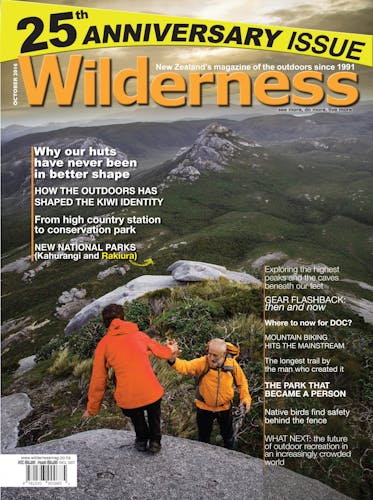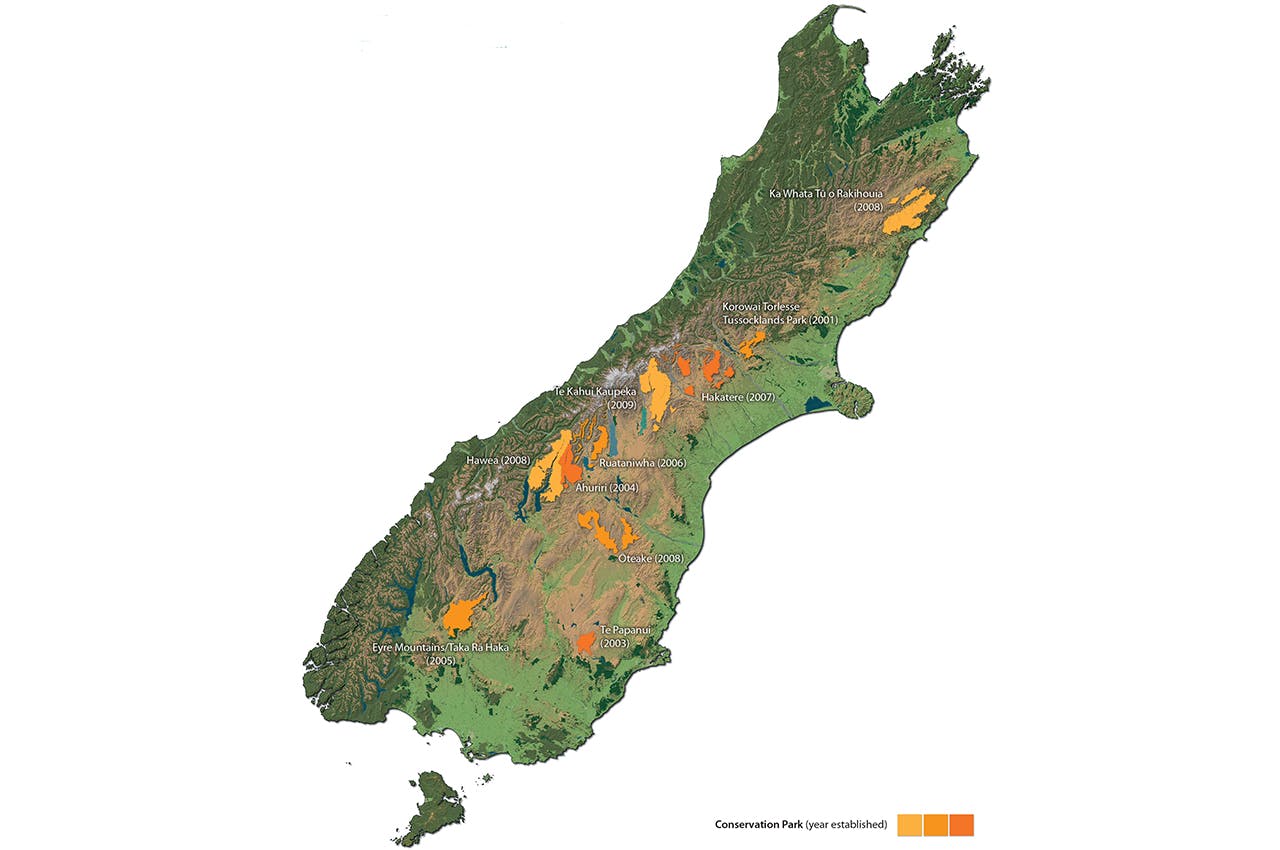A network of conservation parks in the eastern South Island high country has been a landmark achievement for both recreation and conservation.
By Les Molloy
Balancing pastoral farming with public access and biodiversity conservation in the Crown-owned tussocklands of the eastern South Island high country has been contentious for more than a century. The extent of these wild lands is enormous – 2.2 million hectares, or eight per cent of New Zealand’s land area – carved up into 300 pastoral runs (with renewable 33-year leases) under the Land Act 1948.
They include many iconic tussock grassland and mountain landscapes, from the Seaward Kaikoura Range of Marlborough, through the glacial lakes of the Mackenzie Basin, over Central Otago’s flat-topped block mountains, to the Garvie Mountains of northern Southland.
The most controversial property right conferred by the Crown on the pastoral lessee was that of trespass and this sometimes brought hunters and mountaineers into conflict with runholders.
Over the decades, FMC, NZ Deerstalkers Association, and Fish & Game sought some rationalisation of this anachronistic situation; at the same time, many pastoral lessees were frustrated at not being allowed to freehold some of their leasehold and intensify their farming, or set up tourist enterprises. Government’s response was the Crown Pastoral Land Act 1998 which allowed the runholders to voluntarily enter into ‘tenure review’, whereby they could gain freehold title to the productive portion of the run while the areas of low productive value (mountain tops and glaciers) or areas of high conservation value (usually wetlands, stream margins and rare plant communities) would pass to DOC.
Although DOC inherited the recreationally-important forest parks established by the former NZ Forest Service, the concept of ‘conservation parks’ in the high country tussocklands of the eastern South Island only became a reality when the 21,000ha Korowai/Torlesse Tussocklands Park in the upper Waimakariri was established in November 2001. However, Korowai/Torlesse didn’t become available for public enjoyment solely through tenure review; rather, most of the land reverted to full public ownership (and DOC management) through the work of government’s Nature Heritage Fund which purchased large parts of the former Benmore, Avoca and Castle Hill pastoral runs.
In 2003, the Labour Government announced that it wanted greater public recreational access to, and biodiversity conservation in, the high country. A key part of this policy was to progressively establish 15-20 ‘high country conservation parks’. That same year, 20,591ha of snow tussocklands in the Lammerlaw and Lammermoor Ranges of Otago were designated as the second park – Te Papanui – in this network.
Then Federated Mountain Clubs and Forest & Bird joined forces in 2005 to launch their highly-publicised ‘Six pack of parks’ campaign. This advanced six more high country wild land conservation park candidates – Hawkdun/Oteake; the Remarkables; Pisa Range; Upper Rangitata/Arrowsmith/Lake Heron (Hakatere); St James/Spenser Mountains; and Kaikoura Ranges.
Over the next four years, remarkable progress was made in establishing this network of high country conservation parks, with 10 parks (totaling almost 600,000ha) a reality by 2009. The list includes three of the ‘six pack’ – Oteake, Haketere and Ka Whata tu o Rakihouia (Kaikoura) – while St James is very likely to also become a conservation park in the future when DOC completes its review of Stewardship lands.
Management of these 10 high country conservation parks poses quite a challenge for DOC as government generally provided little additional finance for weed, pest and fire control, let alone recreational facilities. Compared with our national parks they have a lower tourist profile; they lack visitor centres and only have a rudimentary hut and track system. However, the Te Araroa Trail passes through some of them and they offer superb opportunities for remote mountaineering, tramping, mountain-biking, hunting, fishing, bird-watching and botanising.
– Les Molloy is a conservationist who has written several books on NZ’s wilderness.






